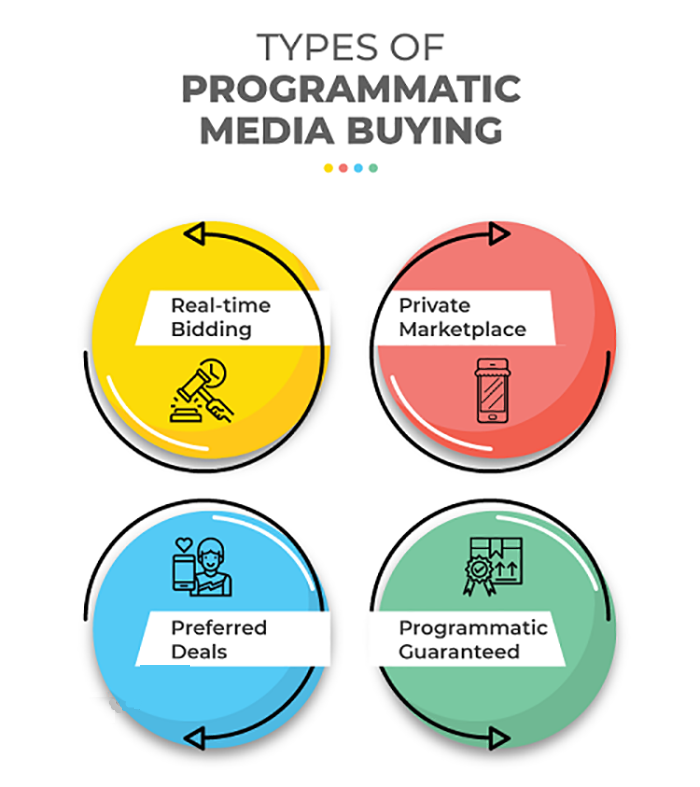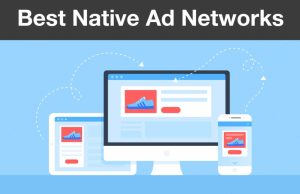Every time a user accepts so-called “cookies” within a website, they are automatically accepting the recording of certain browsing parameters. This is one of the most common practices in the programmatic advertising environment.
Programmatic algorithm technology uses that trace and combines it with marketing strategies. This allows studying consumer trends in order to offer personalized advertising for each user.
In this way, companies can buy audiences and not ads places. This means that they pay to offer an ad to a specific audience and not simply to advertise in a certain place or channel.
Interesting, right? So read on and find out below what programmatic advertising is and how it works.
What is Programmatic Advertising?
Programmatic advertising or programmatic buying is a term that refers to the automated purchase of advertising space on the Internet, especially native ads.
It is marketed through an automatic procedure for the purchase/sale of advertising. In the programmatic advertising buying process, advertisers buy “people” instead of advertising space.
It could be said then, that they pay for the person who is using that space. So programmatic advertising is the smart way to advertise online. Advertisers pay for their ads to be shown only to their target audience.
This allows, in this way, the “connection” between the brand and the right consumer, at the right time and place, showing programmatic ads for products related to client.
The value of this process lies in the fact that, thanks to technology, it is detected that a specific person has a real interest in receiving a certain advertisement.
So, they offer relevant and interesting native ads to the user instead of invasive or out of context advertising, as was the case before the application of this method.
In this way, the most interesting advantage of programmatic advertising is the possibility of personalizing the ads. This is achieved through the design of different versions, depending on the profile of the audience and the context in which they find themselves.
These data are collected after segmenting them through the generated cookies, while browsing the different media.

4 Types of programmatic advertising
Real Time Bidding (RTB)
Talking a bit about the concept, it is said to be “Real Time” because the impression is offered to all buyers at the same time. And it is said to be “Bidding” because it is based on an auction or bid system.
Now, programmatic advertising and RTB are two different concepts but they are closely linked in achieving the same goal. We are talking about optimizing the ROI of our online advertising campaigns.
One of the keys to programmatic advertising is that it seeks to buy audiences, RTB seeks to buy advertising instantly or in real time.
It does this taking into account the user’s profile information, so the advertiser can decide whether or not they are interested in bidding on that impression.
The most interesting thing about this technology is that the impressions are purchased per unit and not by packages, so each impression can have a different price from others.
In RTB, the publisher sets a price floor for their advertising spaces, which would be the minimum bid price, leaving it up to the advertiser to determine the price they are willing to pay to appear in those advertising spaces.
This means that when there is a coincidence between the sale price of an advertising space and the purchase price that an advertiser is willing to pay, then the operation takes place, showing the ad.
Private Marketplace (PMP)
Private auctions are those that can only be accessed by a number of advertisers, in which they are invited to bid for one space or several with priority.
Similarly, the brand has total control of the support in which its creatives will appear, its image will remain safe and protected in controlled environments, from those that participate in the auction.
The costs are not usually as optimized as with an RTB system, but it guarantees a higher quality when we look for specific native ads.
Preferred deals
In this type of programmatic, the media and the advertiser previously agree on a fixed price, there is no auction, but the purchase is not guaranteed either.
Publishers submit their space inventory and set price to it before selling it through Real Time Bidding.
Publishers get to occupy their spaces before reaching the auction and advertisers, greater control and security over their appearances.
Programmatic guaranteed
This option is the one recommended by experts whenever brands want to control the space in which their native ads will appear, since they are commercial agreements closed in advance but with the process managed automatically with technology.
The main advantage for the advertiser lies in the total control at all times of the spaces in which their brand will be present and for the publishers, the guarantee of having their advertising spaces occupied.
Benefits of programmatic advertising
- User segmentation. By using programmatic advertising and RTB, it is possible to filter native ads through user’s profile. It means we are taking into consideration user’s behavior when it comes to buying habits.
- Simple system. This process manages to bring together various agents such as advertisers, publishers and media, all in one place, so you as a client can save your time and money.
- Better rates. Because of segmentation by user profile, the conversion rates per ad click are higher.
- Greater range. It allows you to reach potential customers by placing native ads across several platforms and geographic locations.
How to start doing programmatic advertising?

The benefits of the programmatic advertising can be taken full advantage of when it is done properly, so we tell you how you should do it so that you get the best results.
Prepare yourself, set goals and be “creative”.
If you’re ready to boost your brand’s performance with programmatic ads, you’ll first need to do your research, set goals, and think about your creative strategy.
To do this, set your performance goals, which will help you determine the best settings for your ad campaign. For example, if your goal is to increase traffic to your website, you’ll want to select broader targeting options and implement a big creative message.
Each method allows you to reach customers in a slightly different way, and you’ll need to choose the method or combination of methods that work best for your specific goals.
Listen to experts
Once you’ve set your goals and determined the type of creative you’ll be using, it’s time to choose a suitable platform.
No matter which one you choose, the selection is incredibly important as it will determine your success in programmatic.
Partnering with tech experts can help you choose a platform and get the most out of its features.
Know your clients and the market
For programmatic ads to work well, it requires valuable, quality data. This data gives you the information you need to target customers and drive sales.
First-party data is perhaps the most valuable and free, as it is information you collect directly from your customers.
As soon as your campaign is live, it’s time to start optimizing it. Using platforms allows you to access real-time reports and analyze the data contained in these reports to understand the effectiveness of each source by measuring important metrics, overall spend, and campaign conversion value.
Use this information to identify potential problem areas in your ad campaign and use that data to devise more effective strategies.
Conclusion on programmatic advertising
The most important thing to keep up with programmatic advertising is to change your mindset. We must be aware that we are buying audiences, not space in the media.
For the strategy to work, it is crucial not to lose the horizon and get the most out of it. The greatest advantage is represented by being able to analyze the behavior of the audience.
What is sought with the segmentation of the audience according to their tastes, desires and needs, is to show the native ads to an audience that, although smaller, shows some interest in the product or brand, which could increase the conversion to purchase ratio, which is the goal that every brand pursues.







